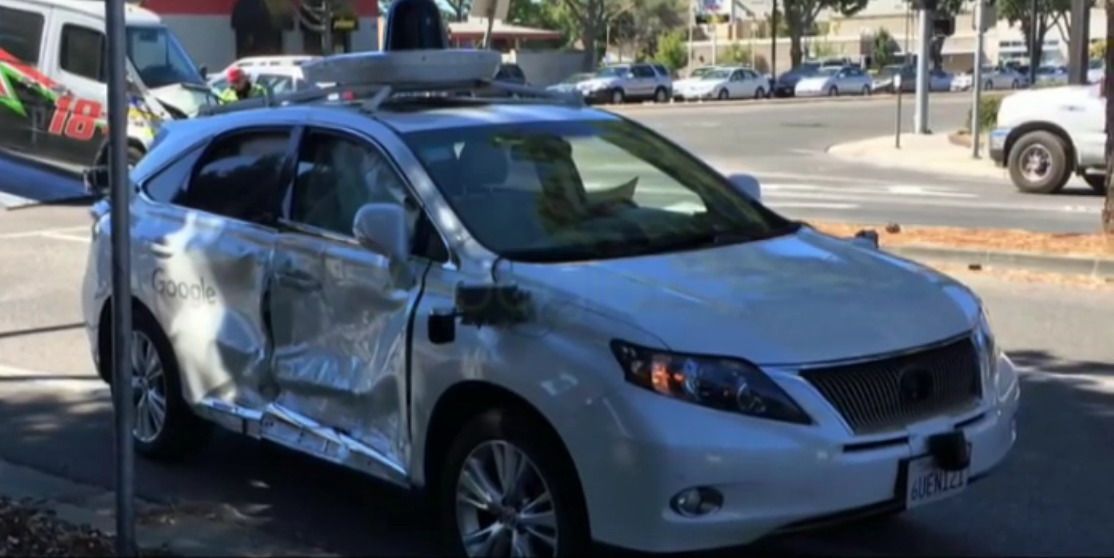Google’s self-driving Lexus RX450h hybrid SUV was involved in a car accident near the company’s headquarters in Mountain View, California after a commercial van ran a red light on an intersection and blowing through the side of the SUV, causing significant damage to the car. Fortunately, neither the truck driver nor the human driver on-board the RX450h were hurt from the incident.
The tech giant was quick to release a statement about the crash, emphasizing that the self-driving car wasn’t at fault of the crash. According to the statement, the self-driving car’s traffic light was at green “for at least six seconds” before it entered the intersection. The car, which was piloting itself at the time of accident, was going about its business when the van ran its red light. The driver inside the SUV ultimately applied the brakes but it was too late as the van hit the SUV clean in the side, resulting in the latter to have to towed away in a flatbed trailer.
Incidents like this have already plagued Google’s development of autonomous driving technology, including multiple instances wherein its cars have been rear-ended in slow-moving traffic. This particular incident though is the first time one of the tech’s giants self-driving cars has figured into a high-speed crash.
Google is expected to release a more detailed report about the crash towards the end of the month, but the incident also highlights one of the significant challenges attributed to the development of autonomous driving vehicles. As advanced as these cars are expected to become, they still can’t account for the behavior of other drivers on the road, particularly those who don’t pay as much attention on the road when they’re driving as they should.
Continue after the jump to read the full story.
The need to establish a more harmonious road ecosystem
It’s easy to chalk this incident up to a case of a driver not paying attention to the road, but because the car it crashed was Google’s self-driving car, it needs to be talked about in a different light because of all the issues it brings up about how self-driving cars can co-exist on the road with their more traditional counterparts.
As I said, self-driving cars, while innovative and purposeful both in the short and long term, are not going to make roads inherently safer when they start becoming commercially available. That’s because there are certain road conditions that no self-driving car will be able to figure out using whatever algorithms they employ. One of the biggest and most important is human behavior, which was clearly exhibited by the inattentive driver of the van that crashed into the side of Google’s self-driving Lexus RX450 hybrid. As careful as these self-driving cars, there’s really very little that protects them from reckless drivers who are one of the biggest causes of road accidents to begin with.
I’m not saying that it’s ill-fated for these automakers and tech companies to continue pursuing autonomous driving technology because that’s clearly not the case. There is a big space for these cars in harnessing a safer and more sustainable future, not just for the industry itself, but for the entire world. But there is a price that comes with it and until we see roads completely dominated by self-driving cars, human behavior remains the ultimate wild card in determining how successful this pursuit is.
At some point, there must be a concerted effort to pursue a more harmonious road ecosystem between traditional cars and their self-driving counterparts. How that will be accomplished is a question that needs to be answered sooner or later.

